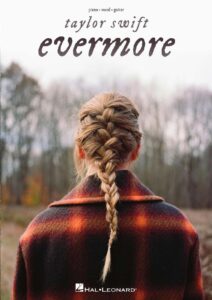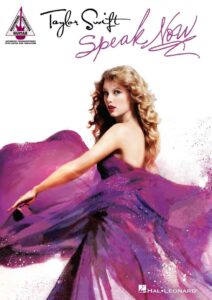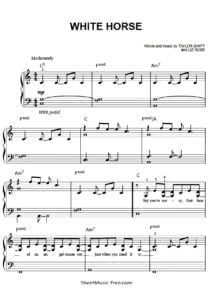Table of Contents
Claude Debussy: The 100 most inspiring musicians of all time
The works of French composer Claude Debussy (Achilles-Claude Debussy) (b. Aug. 22, 1862, Saint-German-en-Laye, France —d. March 25, 1918, Paris) have been a seminal force in the music of the 20th century. Debussy developed a highly original system of harmony and musical structure that expressed in many respects the ideals to which the impressionist and symbolism painters and writers of his time aspired.
Early Period
Debussy showed a gift as a pianist by the age of nine. He was encouraged by Madame Mauté de Fleurville, who was associated with the Polish composer Frédéric Chopin, and in 1873 he entered the Paris Conservatory, where he studied the piano and composition, eventually winning in 1884 the Grand Prix de Rome with his cantata L’Enfant prodigue (The Prodigal Child ).
While living with his parents in a poverty-stricken suburb of Paris, he unexpectedly came under the patronage of a Russian millionairess, Nadezhda Filaretovna von Meck, who engaged him to play duets with her and her children. He traveled with her to her palatial residences throughout Europe during the long summer vacations at the Conservatory. In Paris during this time he fell in love with a singer, Blanche Vasnier, the beautiful young wife of an architect; she inspired many of his early works.

This early style is well illustrated in one of Debussy’s best-known compositions, Clair de Lune. The title refers to a folk song that was the conventional accompaniment of scenes of the love-sick Pierrot in the French pantomime; and indeed the many Pierrot-like associations in Debussy’s later music, notably in the orchestral work Images (1912) and the Sonata for Cello and Piano (1915; originally titled Pierrot fâché avec la lune [“Pierrot Vexed by the Moon”]), show his connections with the circus spirit that also appeared in works by other composers.
Claude Debussy’s Sheet Music download.
Middle Period
As a holder of the Grand Prix de Rome, Debussy was given a three-year stay at the Villa Medici, in Rome, where, under what were supposed to be ideal conditions, he was to pursue his creative work. Debussy eventually fled from the Villa Medici after two years and returned to Blanche Vasnier in Paris. At this time Debussy lived a life of extreme indulgence. Once one of his mistresses, Gabrielle (“Gaby”) Dupont, threatened suicide. His first wife, Rosalie (“Lily”) Texier, a dressmaker, whom he married in 1899, did in fact shoot herself, though not fatally, and, Debussy himself was haunted by thoughts of suicide.
The main musical influences on Debussy were the works of Richard Wagner and the Russian composers Aleksandr Borodin and Modest Mussorgsky. Wagner fulfi lled the sensuous ambitions not only of composers but also of the symbolist poets and the impressionist painters.
Wagner’s conception of Gesamtkunstwerk (“total art work”) encouraged artists to refi ne upon their emotional responses and to exteriorize their hidden dream states, often in a shadowy, incomplete form; hence the more tenuous nature of the work of Wagner’s French disciples.
It was in this spirit that Debussy wrote the symphonic poem Prélude à l’après-midi d’un faune (1894). Other early works by Debussy show his affinity with the English Pre-Raphaelite painters; the most notable of these works is La Damoiselle élue (1888), based on The Blessed Damozel (1850), a poem by the English poet and painter Dante Gabriel Rossetti.
In the course of his career, however, which covered only 25 years, Debussy was constantly breaking new ground. His single completed opera Pelléas et Mélisande (first performed in 1902) demonstrates how the Wagnerian technique could be adapted to portray subjects like the dreamy nightmarish figures of this opera who were doomed to self-destruction.
Debussy and his librettist, Maurice Maeterlinck, declared that they were haunted in this work by the terrifying nightmare tale of Edgar Allan Poe, The Fall of the House of Usher. The style of Pelléas was to be replaced by a bolder, more highly coloured manner. In his seascape La Mer (1905) he was inspired by the ideas of the English painter J. M.W. Turner and the French painter Claude Monet. In his work, as in his personal life, he was eager to gather experience from every region that the imaginative mind could explore.
Late Period
In 1905 Debussy’s illegitimate daughter, Claude-Emma, was born. He had divorced Lily Texier in 1904 and subsequently married his daughter’s mother, Emma Bardac. For his daughter he wrote the piano suite Children’s Corner (1908).
Debussy’s spontaneity and the sensitive nature of his perception facilitated his acute insight into the child mind, an insight noticeable particularly in Children’s Corner; in the Douze Préludes, two books (1910, 1913; “Twelve Preludes”), for piano; and in the ballet La Boîte à joujoux (1st perf. 1919;
The Box of Toys). In his later years, it is the pursuit of illusion that marks Debussy’s instrumental writing, especially the strange, otherworldly Cello Sonata. This noble bass instrument takes on, in chameleon fashion, the character of a violin, a flute, and even a mandolin.
Evolution of His Work
Debussy’s music marks the first of a series of attacks on the traditional language of the 19th century. He did not believe in the stereotyped harmonic procedures of the 19th century, and indeed it becomes clear from a study of mid-20th-century music that the earlier harmonic methods were being followed in an arbitrary, academic manner.
Debussy’s inquiring mind similarly challenged the traditional orchestral usage of instruments. He rejected the traditional dictum that string instruments should be predominantly lyrical. The pizzicato scherzo from his String Quartet (1893) and the symbolic writing for the violins in La Mer, conveying the rising storm waves, show a new conception of string colour. Similarly, he saw that woodwinds need not be employed for fireworks displays; they provide, like the human voice, wide varieties of colour.
Debussy also used the brass in original colour transformations. In fact, in his music, the conventional orchestral construction, with its rigid woodwind, brass, and string departments, finds itself undermined or split up in the manner of the Impressionist painters. Ultimately, each instrument
becomes almost a soloist, as in a vast chamber-music ensemble. Finally, Debussy applied an exploratory approach to the piano, the evocative instrument par excellence.
In his last works, the piano pieces En blanc et noir (1915; In Black and White) and in the Douze Études (1915; “Twelve Études”), Debussy had branched out into modes of composition later to be developed in the styles of Stravinsky and the Hungarian composer Béla Bartók. It is certain that he would have taken part in the leading movements in composition of the years following World War I. His life, however, was tragically cut short by cancer.
The Best of Debussy
Pianist: Pascal Rogé
Track List:
Arabesque Nº1 4:21 Arabesque Nº2 7:49 Clair De Lune 13:29 Passepied 16:46 Rêverie 21:40 Hommage A Rameau 29:22 Voiles 33:41 Les Sons Et Les Parfums Tournent Dans L’air Du Soir 37:58 La Fille Aux Cheveux De Lin 41:02 La Cathédral Engloutie 48:10 Musiciens 50:35 Le Petit Berger 54:05 Golliwogg’s Cakewalk 57:13 L’isle Joyeuse 1:03:35 Prelúdio para a tarde de um fauno
Browse in the Library:
| Artist or Composer / Score name | Cover | List of Contents |
|---|---|---|
| Takashi Yoshimatsu – Piano Folio … To a disappeared pleiad | ||
| Take Five (Musescore File).mscz | ||
| Take Five by Paul Desmond Jazz Play Along |
 |
|
| Take Five Guitar by Chet Atkins.mscz | ||
| Take Five Jazz Standard by Paul Desmond arranged for Guitar by Chet Atkins with Tablature TABs | Take Five Jazz Standard by Paul Desmond arranged for Guitar by Chet Atkins with Tablature | |
| Take Five Jazz Standard Paul Desmond Dave Brubeck arr. Carsten Gerlitz |
 |
|
| Take Me To The Land Of Jazz by Pete Wendling (1919) |
 |
|
| Take That – Could It Be Magic | ||
| Take That – How Deep Is Your Love | Take That how-deep-is-your-love | |
| Takemitsu – Secret Love Guitar with TABs |
 |
|
| Takemitsu, Toru – 12 Songs for guitar |
 |
|
| Tales Of Earthsea Teeru No Uta Kashuu Baajon Taniyama Hiroko Miyazaki Tomochika |
 |
|
| Talking Heads Anthology |
 |
Talking Heads Anthology |
| Tally Hall Hidden In The Sand (Piano Solo) |
 |
|
| Tangled – Alan Menken OST |
 |
Alan Menken – Tangled (Disney) Rapunzel songbook |
| Tango El Caramel (Khaled Mouzanar) | ||
| Tango Fake Book |
 |
Tango Fake Book |
| Tangos And More (Intermediate Piano Solos) |
 |
Tangos And More (Intermediate Piano Solos) |
| Tangos Para Guitarra |
 |
Tangos |
| Tania Maria Yatra Ta |
 |
|
| Tant Que Vivray (Musescore File).mscz | ||
| Tanta voglia di lei (Pooh) | ||
| Tarantella in 3rd class (Ennio Morricone) | ||
| Taro Iwashiro – Her Most Beautiful Smile | ||
| Tárrega – Làgrima (Guitar Tabs) (Musescore File).mscz | ||
| Tàrrega 12 Studies for Guitar Guitarra |
 |
|
| Tàrrega Integral De Guitarra |
 |
Tàrrega guitar |
| Tàrrega, F. – Recuerdos de la Alhambra (Guitar).mscz | ||
| Tarzan (Disney) songbook Music by Phil Collins |
 |
 |
| Tarzan Full Score (The Musical) Music and Lyrics by Phil Collins |
 |
|
| Tausig – Ballad (The Ghostship – Das Geisterschiff) |
 |
|
| Taverner, John – In Nomine (full score) MS 31390 fol. 120 | ||
| Taylor Billy Modern Jazz Piano Solos |
 |
|
| Taylor Swift Easy Piano Anthology (Taylor Swift) |
 |
Taylor Swift Easy Piano Anthology (Taylor Swift) |
| Taylor Swift Evermore Piano vocal guitar Songbook (Taylor Swift) |
 |
|
| Taylor Swift Lover Songbook (Taylor Swift) |
 |
Taylor Swift Lover Songbook (Taylor Swift) |
| Taylor Swift – ME! Sheet Music |
 |
|
| Taylor Swift Reputation Songbook (Taylor Swift) |
 |
Taylor Swift Reputation Songbook (Taylor Swift) |
| Taylor Swift – 1989 Songbook – Taylor Swift sheet music |
 |
Taylor Swift – 1989 Songbook – Taylor Swift sheet music |
| Taylor Swift – Anti-Hero (piano sheet music) |
 |
|
| Taylor Swift – Anti-Hero (Piano Sheet Music) (Musescore File).mscz | ||
| Taylor Swift – Back to December (piano solo sheet music) |
 |
|
| Taylor Swift – Best Of Taylor Swift Easy Piano Songbook (Swift, Taylor) |
 |
Taylor Swift – Best Of Taylor Swift Songbook (Swift, Taylor) |
| Taylor Swift – Blank Space (piano vocal sheet music) | Taylor Swift – Blank Space (piano vocal sheet music) | |
| Taylor Swift – Fearless | ||
| Taylor Swift – Fearless (Guitar and TABS Songbook) |
 |
Taylor Swift – Fearless (Guitar and TABS Songbook) |
| Taylor Swift – Fearless Songbook Piano and vocal |
 |
Taylor Swift – Fearless Songbook |
| Taylor Swift – I Knew you were trouble (piano and voice sheet music) |
 |
|
| Taylor Swift – Untouchable |
 |
|
| Taylor Swift A Place In This World Sheet Music |
 |
|
| Taylor Swift All Too Well (10 Minute Version) Sheet Music |
 |
|
| Taylor Swift Bad Blood Sheet Music |
 |
|
| Taylor Swift Best Of Taylor Swift Very Easy Piano songbook |
 |
Taylor Swift Best Of Taylor Swift Very Easy Piano songbook |
| Taylor Swift Cardigan Sheet Music |
 |
|
| Taylor Swift Cruel Summer Piano Vocal Guitar Chords | Taylor Swift Cruel Summer Piano Vocal Guitar Chords | |
| Taylor Swift Death By A Thousand Cuts Sheet Music |
 |
|
| Taylor Swift Delicate Sheet Music |
 |
|
| Taylor Swift Don_t Blame Me Sheet Music |
 |
|
| Taylor Swift Enchanted Sheet Music |
 |
|
| Taylor Swift Exile Sheet Music |
 |
|
| Taylor Swift Last Christmas |
 |
|
| Taylor Swift Look-What-You-Made-Me-Do-Sheet-Music |
 |
|
| Taylor Swift Love Story Sheet Music |
 |
|
| Taylor Swift Nothing New Sheet Music |
 |
|
| Taylor Swift Piano Theme The Giver |
 |
|
| Taylor Swift Piano Theme The Giver V2 |
 |
|
| Taylor Swift Safe Andsound |
 |
|
| Taylor Swift Shake It Off Sheet Music |
 |
|
| Taylor Swift Shake It Off Sheet-Music |
 |
|
| Taylor Swift Speak Now Songbook (Guitar Recorded Versions) (Swift Taylor) Guitar TABs |
 |
Taylor Swift Speak Now Songbook (Guitar Recorded Versions) (Swift Taylor) Guitar TABs |
| Taylor Swift The Whole Story Unauthorised (Newkey Burden, Chas) Book |
 |
|
| Taylor Swift We Are Never Ever Getting Back Together Sheet Music |
 |
|
| Taylor Swift White Horse Sheet Music |
 |
|
| Taylor Swift You Belong With Me Sheet Music |
 |
|
| Taylor Swift You Need To Calm Down Sheet Music PDF |
 |
|
| Taylorswift – Lovestory | ||
| Tchaikovsky Dance Of The Four Swans Transcribed For Piano By Earl Wild Sheet Music |
 |
|
| Tchaikovsky Dance Of The Sugar Plum Fairy (Easy Piano Solo Arr.) |
 |
|
| Tchaikovsky Waltz From The Sleeping Beauty Suite (Rachmaninoff Four Hands) Read Description |
 |
|
| Tchaikovsky Waltz From The Sleeping Beauty Suite (Rachmaninoff Four Hands) Read Description (Musescore File).mscz | ||
| Tchaikovsky The Nutcracker Suite Op, 71 Piano Solo Transcription By Pletnev | Tchaikovsky The Nutcracker Suite Op, 71 Piano Solo Transcription By Pletnev | |
| Tchaïkovsky – Nina Berberova (Book Biographie) Français, French |
 |
|
| Tchaikovsky – 1812 Festival Overture Op. 49 (full score) |
 |
|
| Tchaikovsky – Album for the Young Op. 39 | Tchaikovsky Album for the Young | |
| Tchaikovsky – Canción triste | ||
| Tchaikovsky – Concert Suite Sleeping Beauty Nutcracker (Piano transcription by Pletnev) |
 |
|
| Tchaikovsky – Dance Of The Sugar Plum Fairy (Easy Piano Solo Arr.) (Musescore File).mscz | ||
| Tchaikovsky – Harmony Book | Tchaikovsky – Harmony Book | |
| Tchaikovsky – Nutcracker Suite For Solo Classical Guitar with TABs |
 |
Tchaikovsky – Nutcracker Suite For Solo Classical Guitar with TABs |
| Tchaikovsky – Piano Concerto No. 1 (Easy Piano Solo arr.) | Tchaikovsky – Piano Concerto No. 1 (Easy Piano Solo arr.) | |
| Tchaikovsky – Piano Concerto No. 1 1st Mvmt. (Arr. Piano Solo) | Tchaikovsky – Piano Concerto No. 1 1st Mvmt. (Arr. Piano Solo) | |
| Tchaikovsky – Piano Concerto No. 1 1st Mvmt. (Arr. Piano Solo) (Musescore File).mscz | ||
| Tchaikovsky – Romeo & Juliet Overture | ||
| Tchaikovsky – Romeo And Juliet Fantasy Overture For Solo Piano arr. |
 |
|
| Tchaikovsky – Romeo And Juliet Fantasy Overture For Solo Piano.mxl | ||
| Tchaikovsky – Romeo And Juliet Overture (Piano Solo Arr) | Tchaikovsky – Romeo And Juliet Overture (Piano Solo Arr) | |
| Tchaikovsky – Romeo And Juliet Overture (Piano Solo Arr).mscz | ||
| Tchaikovsky – Swan Lake Piano arrangement by Langer |
 |
|
| Tchaikovsky – Swan Lake Theme Easy Piano Solo Arr. Main Theme Sheet Music |
 |
|
| Tchaikovsky – Symphony 6 Easy Piano Solo (Musescore File).mscz | ||
| Tchaikovsky – Symphony 6 theme easy piano solo |
 |
|
| Tchaikovsky – Symphony No. 6 In B Minor – 4th Movement (Musescore File).mscz | ||
| Tchaikovsky – Symphony No. 6 Pathétique (Easy Piano) (Musescore File).mscz | ||
| Tchaikovsky – The Nutcracker Die Nussnacker Suite arr. for guitar with TABs |
 |
Tchaikovsky – The Nutcracker Die Nussnacker Suite arr. for guitar with TABs |
| Tchaikovsky – The Nutcracker Suite (No 7) Pas De Deux |
 |
|
| Tchaikovsky – The Nutcracker Suite (No 7) Pas De Deux (Musescore File).mscz | ||
| Tchaikovsky – Transcriptions For Solo Classical Guitar Vol. 2 with TABs |
 |
Tchaikovsky – Transcriptions For Solo Classical Guitar Vol. 2 with TABs |
| Tchaikovsky – Transcriptions For Solo Classical Guitar Vol.1 with TABs |
 |
Tchaikovsky – Transcriptions For Solo Classical Guitar Vol.1 with TABs |
| Tchaikovsky – Waltz of the Flowers from The Nutcraker Suite Piano Solo arr. | Tchaikovsky – Waltz of the Flowers from The Nutcraker Suite Piano Solo arr. | |
| Tchaikovsky – Waltz of the Flowers from The Nutcraker Suite Piano Solo arr.mscz | ||
| Tchaikovsky -March From The Nutcracker Suite – Transcription By Pletnev (Musescore File).mscz | ||
| Tchaikovsky (H. Pachulski) Symphony No. 6, 4th Movement (Piano solo arr.) | Tchaikovsky (H. Pachulski) Symphony No. 6, 4th Movement (Piano solo arr.) | |
| Tchaikovsky Children’s Album Детский Альбом Op. 39 (Musescore File).mscz | ||
| Tchaikovsky None But The Lonely Heart Six Romances Op. 6 No. 6 (Violin And Piano) (Musescore File).mscz | ||
| Tchaikovsky None but the Lonely Hert Op. 6 no. 6 |
 |
|
| Tchaikovsky op 40 Twelve Pieces (excerpts) | Tchaikovsky op 40 Twelve Pieces | |
| Tchaikovsky Opus 37 The Seasons (Piano) | Tchaikovsky The Seasons | |
| Tchaikovsky Piano Book 3 – 10 musical selections, Easy Piano Solo arrangements |
 |
Tchaikovsky Piano Book 3 |
| Tchaikovsky Piano Concerto No 1 1st Mvmt (Arr For 2 Pianos) (Musescore File).mscz | ||
| Tchaikovsky Piano Concerto No. 1 Easy Piano Solo Arr. (Musescore File).mscz |
